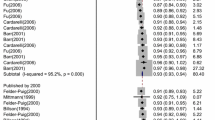Abstract
With the objective of improving policy making, efforts have recently intensified to integrate behavioral sciences, cost-effectiveness analysis, and related disciplines into an evolving field that has been termed “policy sciences.” After reviewing some aspects of policy sciences, the paper discusses an approach, called situational normativism, by which the components of policy sciences may be put to work effectively on real decision problems. The approach is situational in that each problem must be approached individually, but the methodology can be viewed as a general heuristic. Thus, situational normativism involves a synthesis of descriptive (behavioral) and normative approaches. One begins with a descriptive model of a real world decision situation in terms of the participants, their values (objectives, goals) and the decision rules that determine existing outcomes. Then, the analysis becomes normative (and may use mathematical optimizing techniques) in the sense of generating prescriptive alternatives for attaining in a preferred way these same values or a more fundamental set identified during the analysis. The iterative process, including adaptive system redesign, involves a search for a set of means-ends (goals, constraints) relationships within which a search for prescriptive solutions may be undertaken. Change, implementation, and political feasibility are viewed as constraints to be satisfied. Thus, situational normativism provides a framework for the combined use of behavioral knowledge and costeffectiveness techniques for improved policy making.
Similar content being viewed by others
References
Ackoff, R. L. (1970). A Concept of Corporate Planning, John Wiley and Sons, New York.
Clarkson, G. P. E. (1962). Portfolio Selection: A Simulation of Trust Investment, Prentice-Hall, Englewood Cliffs.
Crecine, J. P. (1967). “A Computer Simulation Model of Municipal Budgeting,” Management Science, 13, no. 11, July.
Cyert, R. M. and March, J. G. (1963). A Behavioral Theory of the Firm, Prentice-Hall, Englewood Cliffs.
Dantzig, G. B. (1963). Linear Programming and Extensions, Princeton University Press, Princeton, New Jersey, Section 12.4.
Davis, O. A., Dempster, M. A. H., and Wildavsky, A. (1966). “A Theory of the Budgeting Process,” American Political Science Review, 60, no. 3, September.
Dror, Y. (1968). Public Policymaking Re-examined, Chandler Publishing Company, San Francisco.
Dror, Y. (1970a). “Prolegomena to Policy Sciences,” Policy Sciences, 1, no. 1, Spring.
Dror, Y. (1970b). “Teaching of Policy Sciences: Design for a University Doctorate Program,” Social Sciences Information, 9, no. 2.
Dror, Y. (1970c). “A Policy Sciences View of Future Studies: Alternative Futures and Present Action,” RAND paper P-4305, The RAND Corporation, Santa Monica, California, February.
Gerwin, D. (1969a). “A Process Model of Budgeting in a Public School System,” Management Science, 15, no. 7, March.
Gerwin, D. (1969b). “Towards a Theory of Public Decision Making,” Administrative Science Quarterly, 14, no. 1.
Harris, B. and Ackoff, R. L. (1966). “Strategies for Operations Research in Urban Metropolitan Planning,” The Proceedings of the Fourth International Conference on Operational Research, Hertz, D. B. and Melese, J. (eds.) John Wiley and Sons, New York.
Lasswell, H. D. (1970). “The Emerging Conception of Policy Sciences,” Policy Sciences, 1, no. 1, Spring.
Lerner, D. and Lasswell, H. D. (eds.), (1951). The Policy Sciences: Recent Developments in Scope and Methods, Stanford University Press, Stanford.
Leavitt, H. J. (1965). “Applied Organizational Change in Industry: Structural, Technological, and Humanistic Approaches,” in March, J. G. (editor) Handbook of Organizations, Rand McNally and Company, Chicago.
Lewin, A. Y. (1970). “Towards a Rational Policy of Federal Support of Basic Research in Universities and Colleges,” paper presented at the XVII International Meeting of The Institute of Management Sciences, London, July 1–3.
Lewin, A. Y. and Shakun, M. F. (1971). “Situational Normativism and Teaching of Policy Sciences,” Policy Sciences, 2, no. 1.
Lewin, A. Y. and Shakun, M. F. (1975). Policy Sciences: Methodologies and Cases, Pergamon Press, New York.
March, J. G. and Simon, H. A. (1958). Organizations, John Wiley and Sons, New York.
Shakun, M. F. (1972). “Management Science and Management: Implementing Management Science via Situational Normativism,” Management Science, 18, no. 8, April.
Simon, H. A. (1964). “On the Concept of Organizational Goal,” Administrative Science Quarterly, 9, June.
Weber, C. E. and Peters, G. (1969). Management Action: Models of Administrative Decisions, International Textbook Company, Scranton.
Wildavsky, A. (1964). The Politics of the Budgetary Process, Little Brown, Boston.
Author information
Authors and Affiliations
Rights and permissions
About this article
Cite this article
Lewin, A.Y., Shakun, M.F. Situational Normativism: A descriptive-normative approach to decision making and policy sciences. Policy Sci 7, 1–10 (1976). https://doi.org/10.1007/BF00146017
Issue Date:
DOI: https://doi.org/10.1007/BF00146017




